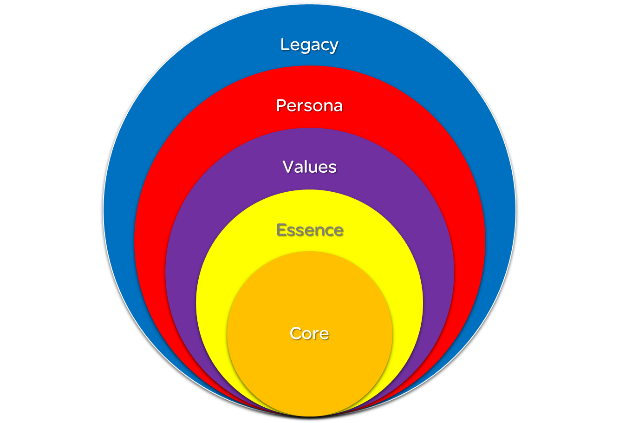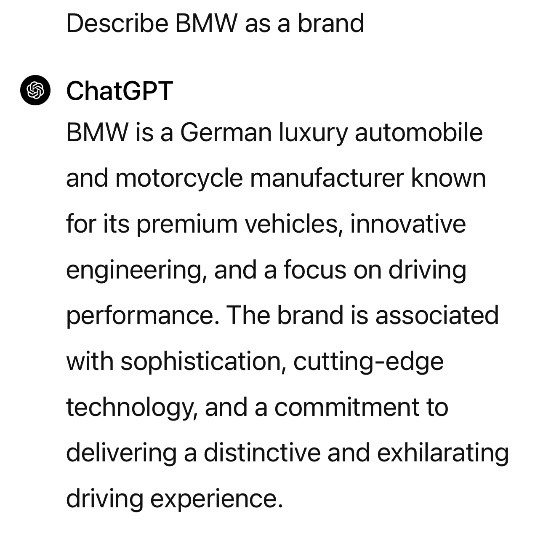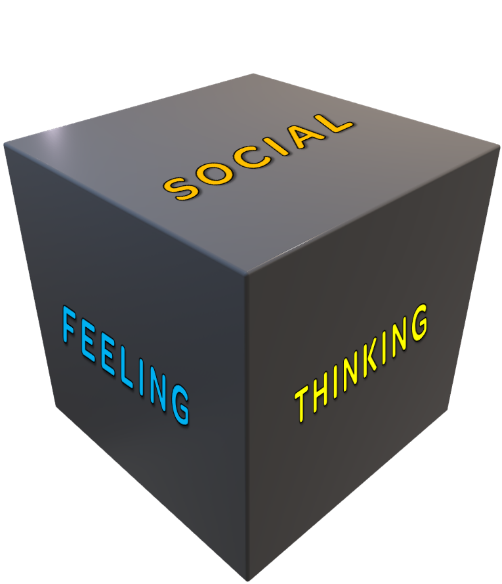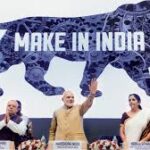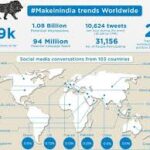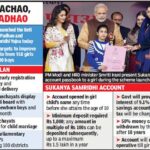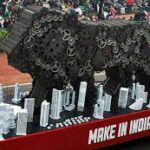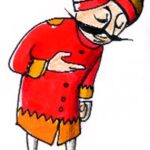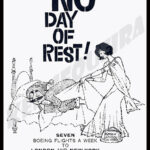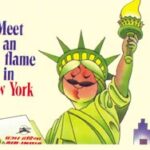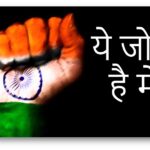Building Brands Intelligently in an Era of Artificial Intelligence
What is a brand? What does it take to build one? Who builds the brand – the marketing team, the product or service by virtue of its delivery of promise? Assuming one can be built is it possible for it to transform?
Questions that would make the best of marketers and gurus pause to reflect and collect their thoughts before they ventured an opinion.
Yes, you read that right! An opinion!! Likely a studied or considered one but opinion, nonetheless. Now, the author doesn’t claim to be an expert marketer either but sure is a passionate one. The very same passion that has brought the author to publish a post on ABVS after a long, very long time!
Most brands have a multi-layered existence that operates in a 3-dimensional space with the so-called 4th dimension being time. These layers tend to thicken over a period of existence during which every brand evolves, becoming more certain, contextual, and relevant.
Let’s understand the layers first.
- The innermost part (but naturally) is the Core of the brand. The core, as the word is defined in the dictionary, is the part that is central to the existence of the brand. The core of a brand is not unlike the calling that we humans oft struggle to find.
The questions that need answers are what am I about? What do I stand for?
The brand like all of us may well spend its lifetime trying to answer these questions. Also, much like us humans the brand also contends or grapples with these questions after having been in existence for a while. Very rarely, almost never is a brand born ready with answers to these questions. Greater understanding of this shall emerge when we look at the 3 dimensions of a brand’s existence.
- The next layer is the brand’s Essence. This is the layer that defines the playground for the brand or articulates the stage that the brand performs on.
The core and the essence of the brand often are to be articulated for and understood more by those who build it. The outcomes of doing so manifest in the layers that surround.
- The third layer is the one where the brand starts becoming more lifelike as its starts defining its own principles and standards of behaviour. Values give a window to and answer what drives or motivates a brand.
- Persona is the fourth layer of the brand. This is the layer that starts giving the brand a voice; answering the questions what do I say and how do I say it?
- Legacy is the outermost layer, the one that is all about the impact. What stays behind after you figured out your calling, performed on the stage, demonstrated what drives you and said what you wanted to the way you wanted say it.
Individually all the above are just words but collectively, they make an entity. One that is felt, seen, has a personality, stands for something and yes, gets talked about – a BRAND!
Before we move on to the dimensions of a brand’s existence it would be prudent to understand what we talked about with the help of an example.
The author mulled many different ones before settling upon BMW.
In sync with the times yours truly resorted to ChatGPT to “Describe BMW as a brand” (refer screenshot).
The answer that ChatGPT put forth is what this author shall use to build his theory of brand construct.
Sidenote: At this point, it makes sense to reiterate that the purpose of this article/post is to evoke/stimulate thought hence agreements and disagreements, mild or vehement are welcome. Please do leave your thoughts in the comments.
The CORE of brand BMW is “engineering”. When you start with an aircraft engine and then move to motorcycles and automobiles innovation is a given and therefore the ESSENCE of the brand. The VALUES of brand BMW are described by their “focus on driving performance”. BMWs ready association with “sophistication and cutting-edge technology” are indicative of its PERSONA. Finally, the brands “commitment to delivering a distinctive and exhilarating driving experience” is bound to be its LEGACY.
Overtly simple in retrospect? Not really, it has taken over a 100yrs of the brand being in existence for it to have the ability to be summarized so succinctly.
Which brings us to the dimensions of that hopefully, courtesy all that we have talked about explain themselves on their own.
Nonetheless, the 3-dimensional space that all brands operate in are as follows:
- Feeling
- Thinking and
- Social
Time speaks for itself as the 4th dimension.
Now the FEELING dimension is all about how a brand makes one feel. It is the tangible, experiential aspect of the brand. Continuing the BMW example. “Sheer driving pleasure”
The THINKING dimension delves into the evocative and subliminal aspects of the brand viz “innovative” and finally the SOCIAL dimension is projective and provocative – “sophistication/luxury/premium”.
All of which need TIME to build, consolidate and get entrenched into the psyche of the audience.
Summing up, a brand is so much more than a name that we choose.
A brand is the sum total of the experience that it delivers, the problems it helps solve, the job it gets done, the way it makes “me” feel, the way “you” see me, and the way the “world” shall remember the brand, you and me for having created and consumed it.
All of that, through its 5 layers and 3-dimensions!
जो कह न सका
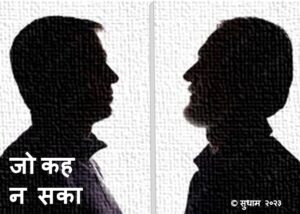
कहने को तो बहुत कुछ है लेकिन आज भी कहा नहीं जाता ऐसा होता तो है मगर होता क्यों है के दिल में आया ख़याल अंजाम नहीं पाता काश के कह दिया होता जो कहना था फिर वक़्त पे मैं ये इल्ज़ाम न लगाता आपकी इज़्ज़त करना जिसे सोचा था उस एहतिराम को बीच का फ़ासला न बनाता अब उम्मीद यही करता हूँ हर बार ये के सुन ही लेते थे आप जो मैं ज़ुबान पे न लाता यक़ीनन पहुँच रहा होगा मेरा दर्द भी ये वरना इतना मुझ से अकेले सँभाला नहीं जाता बस गयें हैं आप शायद अब कहीं मुझ में ही आप से जुदा चेहरा मेरा आईना नहीं बतलाता हर रोज़ रूबरू होता हूँ मैं यूँ अब आप से इसीलिए मैं इस बात का शोध नहीं मनाता कहने को तो बहुत कुछ है लेकिन आज भी कहा नहीं जाता
Branded Nation: Are We Unwittingly Walking Into A Brand-trap?
In the aftermath of the 2014 elections, the Congress kept mentioning that it got blown away by BJP’s marketing blitzkrieg. It should not have come as a surprise to the Congress party though, since the direction of BJP’s strategic thinking was more or less set during A.B. Vajpayee’s tenure as the PM.
The failure of the India shining campaign made the Congress complacent and the BJP resilient. During the ten years they were away from power the BJP practiced and perfected the craft. Finally mounting the attack with its most potent weapon! The sustained digital presence that started with veteran leader L.K. Advani, the share of mind/conversation and something all marketers swear by – on-ground connect; all proved to be gold.
No doubt it has worked for BJP the political party and catapulted it into government. The think-tank reckons it might just work for the government as well.
A government publicizing its schemes and initiatives is nothing new. The Modi government in under an year has kicked off and launched several such schemes and initiatives with much fanfare.
A marked change from earlier has been the ‘Go to Market’. Each one of the initiatives has been supported with a well thought communication plan and activations. Whether it is the Swatch Bharat Abhiyan, the Make in India or the Pradhan Mantri Jan Dhan Yojna every element that could have been branded has been. There has also been a flurry of war cries, rallying cries and punch lines such “Minimum Government and Maximum Governance”, “No Red Tape, Only Red Carpet” etc.
The government needs to tread carefully in order not to fall into its own ‘Brand-trap’.
India as a nation has traditionally been a reluctant marketer and this new aggressive approach has been and should be accorded a cautious welcome both from within and from outside the country. After all, if one of the world’s largest markets has to get its rightful share of the investment pie the helmsmen need to do whatever it takes to catch the world’s eye. Having said that, as with any other product or service the product experience has to back the claim.
All marketing has an element of hyperbole in it. It is for the marketers to ensure that the product lives up to the promises that are made. Regardless of who and where ‘dissonance’ is a concept that all marketers need to be wary of. Few would disagree that in the current context brands, though created by marketers are ‘co-managed’ by the consumers. Therefore, while it is good to see the slick marketing plans for initiatives, it is also important to ensure that the surrounding ‘buzz’ and the ‘conversations’ about need to be managed better and need to have a positive ‘slant’.
As someone once said “A hen lays an egg and cackles, the catfish lays a million without making a sound. We all know whose eggs we eat!”
Avatars: How Mascots Help Brands Engage Better
 We have all as marketers discussed, debated, worked on creating, shaping, modifying the brands that we have managed. Often the central point of conversation would have been about the brand character, its personality. We would either have brand bibles that gave a pen picture of the brand or at times written one de novo.
We have all as marketers discussed, debated, worked on creating, shaping, modifying the brands that we have managed. Often the central point of conversation would have been about the brand character, its personality. We would either have brand bibles that gave a pen picture of the brand or at times written one de novo.What these pen pictures do is that they make the brand tangible for us. As marketers we have given several dimensions such as names, personalities, characteristics some have also given their brands a face!
Mascots for brands have been around for as long as we have known brands. Brands with mascots achieve a lot with very little. It takes most brands time and effort in the form of consistent communication to establish the character traits and a personality for themselves. Of course along with a Hail Mary for it to be understood by the consumers the way it is intended.
Today more than ever before, in an era of increasing choices and decreasing attention spans mascots can play a very significant role in carving consumer mind-space for brands. The digital natives of today understand and also identify with the concept of “avatars”. The digital natives understand that though not the actual person, the avatars are perhaps the nearest likelihood or the self-projection.
From a brands perspective it allows consumers to interact with a “face” or a “person” instead of some nameless, faceless representative. It adds that little bit of familiarity which is key for brand comfort.
Mascots help the brand engage better with its consumers
- They can be de facto brand spokespersons. Mascots can have real time presence in sociosphere, sharing, commenting, reacting and interacting with consumers all across.
- Mascots are more flexible than other brand assets and identifiers such as logos, colors and fonts. They can speak different languages, dress for the occasion helping brands localize and customize messages. Take on multiple avatars!
- The mascot can be a brands promoter at the point of sale. Driving recall, reinforcing the brands core values and even delivering a sales pitch.
- Brand ambassadors may switch or cease to be relevant but mascots will always belong to the brand.
- The sheen of the brand may diminish over time but mascots are ageless. Sometimes even out surviving the brand.
Mascots needn’t necessarily be cartoons, caricatures or animated characters alone. They can be and are human too. Many brands have successfully created characters and used them in communication across multiple touch points.
Here are a few brands and their mascots that according to me have served or are serving their brands superlatively across TV commercials, radio spots, print ads, hoardings and web films.
Look forward to your thoughts.
E.Q. -Brands that tugged at your heart
“I’ve learned that people will forget what you said, people will forget what you did, but people will never forget how you made them feel.”
Maya Angelou
This quote has been and continues to be a guiding factor for me as a marketing professional. It can be universally applied to not just to interpersonal situations but to communication as well. If the intent of all brand communication is to create positive impressions that at some point result in a purchase decision in favour of our brands and products then, how it makes one feel on reception is of paramount importance.
 If one were to look at brand messaging and how consumers would “warm up” to the brand there are 4 distinct levels. Communication that talks about the product and its features alone would get the coldest response. The prospects improve to lukewarm once you move from the I to the you and I space where there is talk of benefits. The slightly warmer zones are where brands cater to the status and social needs. The hottest zone is where the brand creates a connect with the consumer at an emotional level.
If one were to look at brand messaging and how consumers would “warm up” to the brand there are 4 distinct levels. Communication that talks about the product and its features alone would get the coldest response. The prospects improve to lukewarm once you move from the I to the you and I space where there is talk of benefits. The slightly warmer zones are where brands cater to the status and social needs. The hottest zone is where the brand creates a connect with the consumer at an emotional level.There are dozens of research papers that define and describe the range of human emotions putting them into positive and negative buckets. Marketers have for long argued whether to go the factual, cut and dry rational way when they communicate or to appeal to & arouse the consumer’s emotions to get them across the line.
 Derrick Daye at the Blake Project in his article 5 Drivers of Brand Insistence says that the ultimate goal of brand equity building is to move the consumer from brand awareness to brand insistence. He opines that there are five elements that drive a consumer to insist upon a particular brand to meet his or her needs – brand awareness, accessibility, value, relevant differentiation, and emotional connection.
Derrick Daye at the Blake Project in his article 5 Drivers of Brand Insistence says that the ultimate goal of brand equity building is to move the consumer from brand awareness to brand insistence. He opines that there are five elements that drive a consumer to insist upon a particular brand to meet his or her needs – brand awareness, accessibility, value, relevant differentiation, and emotional connection.That being said a brand cannot just churn out arbitrary sentimental stuff that has no connect with what they do or offer.
One question that needs to be answered is whether the communication conforms to or breaks the pattern. In a category where emotions are the norm another communication would not break clutter. Also, does the communication provide adequate proof points to the consumer? Remember it’s not enough to get the consumer all mushy, eventually all communication needs to translate into strengthening the brand.
Here’s a compendium of TVCs that caught my eye. They straddle a host of emotions and categories. Interesting to note how many of these brands are leaders in their categories. Some of them go beyond emotion and deliver a strong brand message whilst others definitely touch your heart yet fail to do much else.
[youtube=http://www.youtube.com/watch?v=HkuKHwetV6Q&list=PLdEKkPjjrZSfQD04FfQWvBnzMTb7DjfzM]
To leave your thoughts use the voting buttons J
[polldaddy poll=8210912]
To Be Or Not To Be: Should Brands Reinforce or Shatter Stereotypes?
 The germ of this article lies in the recent flutter that an interview by the CEO of a cola major has caused in the sociosphere [1] [2]. This post however, is not to express an opinion either for or against the views put forth but to raise a related relevant question. The question is with regard to stereotypes and the role brands and brand communication should be playing. If at all brands and brand communication have any culpability/responsibility with regard to reinforcing or breaking stereotypes.
The germ of this article lies in the recent flutter that an interview by the CEO of a cola major has caused in the sociosphere [1] [2]. This post however, is not to express an opinion either for or against the views put forth but to raise a related relevant question. The question is with regard to stereotypes and the role brands and brand communication should be playing. If at all brands and brand communication have any culpability/responsibility with regard to reinforcing or breaking stereotypes.As marketers sending out communication for and on behalf of our brands we rely heavily on our (collective/organizational/gut/experience) understanding of the consumer. The endeavor always is to gain and convert that killer insight into brilliant communication that hits home. It is for the keen eye to distinguish and separate the wheat from the chaff.
Brand communication over the years has tended to rely heavily on the stereotypes that society offers. These may be discrete pieces of communication from different brands but to consumers/audiences expose to this communication it is a single mass from which certain subliminal messages emanate albeit without being planned.
To explain my point and to connect back to the germ of this article I shall take the example of the stereotypes about women that get or got reinforced. Now it is important to note that each brand is doing its own bit and approaching it based on what its insight is about its category and consumer. However, they collectively end up reinforcing a certain image.
Take the commercials that were being aired on India television during the late eighties, even well into the nineties. The stereotype that was being reinforced was that of the Indian woman as the dutiful housewife. It was her responsibility to keep the utensils, clothes sparkling clean. She needed to ensure ends were met, kids were fed, even cook food good enough to keep the husband’s boss happy. As if all that were not enough she needed to look good and smell good for her husband when he came back home.
http://www.youtube.com/watch?v=PMYFCb_c0A0
Sign of times well not really, considering it would be round about this time that the Indira Nooyis, the Chanda Kochhars, the Naina Lal Kidwais and the Kiran Mazumdars were climbing rungs of the corporate ladder.
The India of the late eighties and nineties did not exist in a bubble. It was simply taking a leaf out of or getting “inspired by” communication of that was being aired elsewhere in Europe and America. It was taken to a satirical level in the book (and later on the movie adaptations) The Stepford Wives by Ira Levin.
There have been examples of brands attempting to break stereotypes as well. An example that comes readily is a campaign by a personal hygiene brand when they chose to dump the veiled, almost apologetic “Woh zaroori din” (translated: “those important days”) approach and said it like it is.
It’s not as if women alone have been subjected to such stereotypes. Men have been brought up with their own set of expectations to live up to. Advertising is replete with exaggerated versions of males as performers, winners, saviours of the world etc. etc. Gender stereotypes apart, brand communication has at times relied on race, colour and ethnic stereotypes as well. These were perhaps found acceptable in the times they were aired.
Ad creators and brand managers across the world will continue to deal with their existential dilemma of reinforcing or breaking stereotypes that form in our society.
So who really is to blame if one feels obligated to conform to these stereotypes? If it is indeed the society then the answer at some level is I, Me and Myself.
To close a few lines penned by the Bard of Avon from Hamlet.
“To be, or not to be? That is the question—
Whether ’tis nobler in the mind to suffer
The slings and arrows of outrageous fortune,
Or to take arms against a sea of troubles,
And, by opposing, end them?”
The Art of Electioneering
“Where absolute superiority is not attainable, you must produce a relative one at the decisive point by making skillful use of what you have.”
Karl von Clausewitz, On War 1832
As I write this post I am aware that hundreds like me are analyzing what the world’s largest democracy has witnessed and trying to put in perspective. As the election juggernaut rolled through the country under intense media attention the various angles to the 2014 elections in India have been explored, analysed and have been discussed threadbare.
One of the things that has bubbled up to the top and been referred to often with an accusatory tone is how India’s PM designate was a well marketed product. There is little doubt that what has just concluded is a milestone election in India’s history. One that introduced several elements into the Art of Electioneering. For sure there will be cases made out this election that students of business, social and political science will delve into across universities. I have in a previous post talked about how the Aam Aadmi Party (AAP) captured the imagination of millions in Delhi. What the creators of the Modi campaign have achieved is far bigger and far reaching in its impact.
“The general who wins the battle makes many calculations in his temple before the battle is fought. The general who loses makes but few calculations beforehand.”
SunTzu, The Art of War
In hindsight what has been executed and arguably to perfection have been text book strategies. Be it SunTzu, Porter or Aaker or Prahalad what the strategy cell of Bhartiya Janata Party has done is research, organize, propagate and execute or as I call it the ROPE trick. For the purpose of this discussion I shall attempt a retro-fit of my observations of the campaign to popular models in marketing strategy.
 Along the lines of the adage “Customer First” we’ll take a look at how the BJP campaign tested on understand the drivers for this election and the needs of the voters i.e. Customer Motivation.
Along the lines of the adage “Customer First” we’ll take a look at how the BJP campaign tested on understand the drivers for this election and the needs of the voters i.e. Customer Motivation.The marketing brains behind the BJP campaign ticked these boxes well and proper. They clearly identified the mood of an electorate that was young and aspirational. From an Indian perspective, we have as marketers devoted hours cracking the code and allocated millions of rupees trying to win the youth over. The BJP campaign identified the Youth as mainstream. As per the 2011 census 65% of India’s population is below 35 with a median age of 29 putting an eligible workforce (15-64) at a whopping 430 million, higher than the entire population of the USA!
The strategists at the BJP HQ caught on to this early in the day and having identified their target segment distilled their motivations. So what were the motivators they identified? Speaking of the high level motivators (since each has contributing factors and dimensions), a strong yearning for growth and opportunities, a need re-assert pride, a secure environment and a decisive leadership were what were chosen as the pegs of the campaign.
http://www.youtube.com/watch?v=4OZMHVtnFRE
The campaign planners were also smart enough to place their communication not just on traditional media but where the Youth were on the internet constantly communicating with each other using a variety of social networking tools from BBM to Instagram to Pintrest to Google Hangouts! This enabled BJP to speak to them at an individual level as well as a collective, influential mass. More importantly, this was not just at the time of the campaign. The social leg of the BJP campaign started a couple of years ago with senior leaders writing blogs, active on twitter etc. The buzz around BJP was atleast 3X their nearest competitor in the sociosphere the AAP.
Several articles have been and will get written regarding the extensive use of digital media by the BJP in election 2014. The use of technological wizardry with the 3D rallies or the beat and booth level mass outreach mobile screens carrying their leaders message the campaign exploited every possible touch-point.
So was it just a media and technology blitzkrieg based on consumer (read voter) understanding or was it more?
Here’s where I would introduce another text book model to which in perspectives will answer what the BJP went about doing. This is about understanding your competition better than anyone else. The BJP used this understanding at every step of the way and in all their communication verbal, written or visual to attack them. Again in hindsight, the way the numbers panned out they seemed to have done it well.
The strategy cell of the BJP along with their campaign creators seemed to have blended their understanding of the voter and the ruling Congress to create the perfect potion that cast a spell over the electorate. The silence of the Prime Minister, the reactive nature of the Congress campaign, the disconnect of their leadership all became weapons in the BJP campaign arsenal.
The respective campaign taglines represented the middle of the road, motherhood tenor of the congress versus the more exhortative call for action from the BJP. Much again has been written and talked about this having been a “Presidential style” election. The author disagrees. Granted that this was an election of personalities like never before, but to say that this was the first is incorrect atleast as far as the past four or five elections are concerned. The BJP always has portrayed a leader whether it was the former Prime Minister Atal Behari Vajpayee with the slogan “Ab ki baari Atal Behari” during the 1998-99 elections or L.K. Advani with “Majboot Neta Nirnayak Sarkar”. Even in the past whether declared or not the contenders for the top post were always clear.
Endnote: The victory of the Bhartiya Janta Party in these elections was a result of a very well thought out strategy and smartly integrated ground realities. It was a journey that began well in time. Yes the leader himself had a role to play, but the magic was him resonating with the youth of this country. Voicing their aspirations and promising a better future. Clichéd and overused as it maybe it goes without saying that with great power comes great responsibility. The burden of the mandate will now be on the BJP it is for them to perform to their promise. The nation hopes for deliverance.
A Bridge Too Far: When VALUE brands dream BIG(ger)
 Dream big they have always told you. To be honest, who amongst us doesn’t want to be the best they possibly can be? Well, that is where reality comes in. In the real world, there’s a difference in the trajectory flights of fancy and engineered flights take.
Dream big they have always told you. To be honest, who amongst us doesn’t want to be the best they possibly can be? Well, that is where reality comes in. In the real world, there’s a difference in the trajectory flights of fancy and engineered flights take.As marketers we have often looked at, wondered about and some of us might even have worked on products or brands that attempted to become a radically different version of their accepted selves.
This post takes a look at a few cases where the brands went against the grain, took the leap but fell or might end up falling short. Of course hindsight is 20/20. Here’s a take on what perhaps the brand bosses might have said to themselves before diving head-first.
“The product is worth it” or “We shall communicate rich” or “We’ll price it premium” etcetera etcetera.
Could work on any given Sunday if you did not have brand baggage to contend with. There are very few brands that the world knows of that entered at the value end of the spectrum and rode up to aspirational end. While some have made successful attempts with new brands, for some others the converse holds true.
Brands as they get built over time create their unique identity. This gets supplemented with the kind of products the brand puts into the market, the brands communication etc. Young & Rubicam’s BrandAsset™ Valuator Model is an interesting method of measuring brand value and relies on four fundamental elements of Differentiation, Relevance, Esteem and Knowledge that it says over time determine the strength and status of a brand.
Now for argument sake let’s construct how a Value brand’s strength and stature graph and compare it to how an aspirational brand would stack up. Intuitively one would say that a value brand does not normally offer great differentiation, is under consideration largely owing to the product category being high on relevance for the consumer, does not have outstanding credentials but makes the cut due to consumer’s familiarity with the brand. Simply put the customer does not mind buying a value brand, the brand deserves you.
An aspirational brand on the other hand is extremely differentiated in the consumers mind, high on relevance as the consumer is thinking he or she is deserving of the brand, held in high regard owing design or innovation pedigree and has an intimate connect with the consumer.
A brands image has tangible and intangible aspects and often it is the quantum of intangible that determines the premiumness/aspirational quotient of a brand. The sources of this “added” value could be the brand name itself, its outlook, its communication or how it is priced. The signature of an aspirational brand is its ability to command a price without having to justify it.
A Maruti Suzuki can make cosmetic changes to its entry level-mid level cars such as the Alto, Wagon-R etc. and continue to be a volume leader, however it fails miserably when it has to justify a high end Kizashi. Similarly for Tata Motors it can be fairly successful with a Safari but not Aria. No amount of “first of its kind” communication tickled any consumer fancy. These brands maybe are too entrenched in their “value” image and need to move mountains to justify even a slight premium.
While the Ferrari’s and the Lamborghini’s of the still fall under the “Unlikely to own” bucket for Indians their less flamboyant European cousins are perceived to be worthy of the premium they charge.
Coming to gadgets and gizmos, having tasted success with their entry and mid segment mobile phones brands like Micromax and Lava with their new brand are attempting to take a slice of the mid-high end pie of the mobile phone market in India. Micromax with Hugh Jackman and Xolo with their positioning pitch high. While one has brand baggage, the other is an attempt at building a brand ground up.
http://www.youtube.com/watch?v=R_UKea_y_dc
Trouble is they neither have the pedigree nor the sit-up and take notice kind of innovation to catapult them.
In the final analysis these brands would have been unable to build a bridge between their “value” roots and “aspiration” dreams.
Another perspective, they just might have moved from being a value brand to a valued brand. Who knows?!
Lost In Translation: Do Unrelated Brand Extensions Erode Brand Value In The Long Term?
Its election time in India. Starting April 07, the world’s biggest democracy shall go in for a marathon round of voting that would be spread over a month. The election jamboree has several contestants and in the fray are people from different walks of life. The noteworthy ones though are the contestants who have been in the public consciousness but for totally different reasons. If celebrities be considered individuals who are brands that they are courtesy their achievements/fame in their original profession. Their foray into politics therefore, is akin to a brand extension.
Now as marketers we are familiar with extensions and have seen many such examples. It is the author’s humble opinion that brand extensions into un-related categories are detrimental to the brand. Now I do not have empirical evidence to back this but more often than not, the brand attributes that made the brand successful in its space would not resonate with consumers in an un-related space. Yes there have been brave attempts at looking at a core set of values and carrying forward those elements that are relevant to the spaces related or otherwise that the brand is being carried into.
Since there is a constant back and forth amongst marketers regarding brands as people and people as brands (also the starting point of the current discussion), it would only be fair to look at things through Kapferer’s Brand Identity Prism
Just to refresh the model suggests that there are six facets to brand identity. As with individuals there is what gets projected and communicated and there is what gets received and understood.
- Physique: The brand in Its physical/tangible form eg. colour, packaging, product form etc.
- Personality: How the brand projects itself. Fun, young etc.
- Culture: A set of values that feed the brand.
- Relationship: the brand has with its consumers or stakeholders i.e. aspirational, inspiring, motivating, ostentatious etc
- Reflection: An image a brand creates regarding who its typical user would be. Example Blackberry with QWERTY phones for executives.
- Self-image: What the brand does to its consumer’s image of self. For example, ladies hand bags from fashion brands perhaps project “I can afford it” for a bulk of their consumers.
Coming back, the contestants in this election range from the “have-beens” to the “could not have beens”. Movie stars, sports persons and business icons they are all there. If one were to critically assess any one of them with respect to the brand that they have built in terms of elements 2 through 6 listed above with the assumption that physique is something they cannot easily change, most would find diminished relevance of their established identity in the new space.
Yes there have people who have translated their success in one field into success in another but the examples are few and far between.
I will defend my case with two examples one a business brand that made an extension into an unrelated field, another an individual. Both brands that attained dizzying heights forayed into an unrelated spaces and ended up eroding if not decimating brand value in the final analysis.
Exhibit#1 The individual: Amitabh Bachchan arguably India’s biggest movie star and an icon for millions of Indians across generations. The Big B as he is popularly referred to made according to him one of the biggest mistakes in life when he chose to enter politics. A super-star he contested elections from Allahabad, UP, India and dislodged a stalwart. What followed were years of turmoil as he got embroiled in allegations of corruption that tarnished his image. It took Amitabh Bachchan the brand over a decade to rise from the ashes, a deed that not all can perform.
https://www.youtube.com/watch?v=6jj7z7rt_9E
Exhibit#2 Kingfisher: Originally a beer brand it was extended to an airlines. The brand attempted to translate “the good times” value to the service industry. From offering a low-fares to the concept of premium economy the brand threw everything including the kitchen sink at the customers. Perhaps one of the better executed transitions only from a process standpoint. The change in logo from a perched Kingfisher to a flying one, the launch and the initial follow through were commendable. However, the ambitions were all consuming. The brand and the business were unable to reduce the revenues vs expenses gap and finally the airline operations that commenced sometime in 2004-05 came to a grinding halt in 2012-13. There is sure to have been damage of the episode on Kingfisher the beer brand, pretty sure some enthusiasts would be out there collecting the before and after data for Kingfisher.

